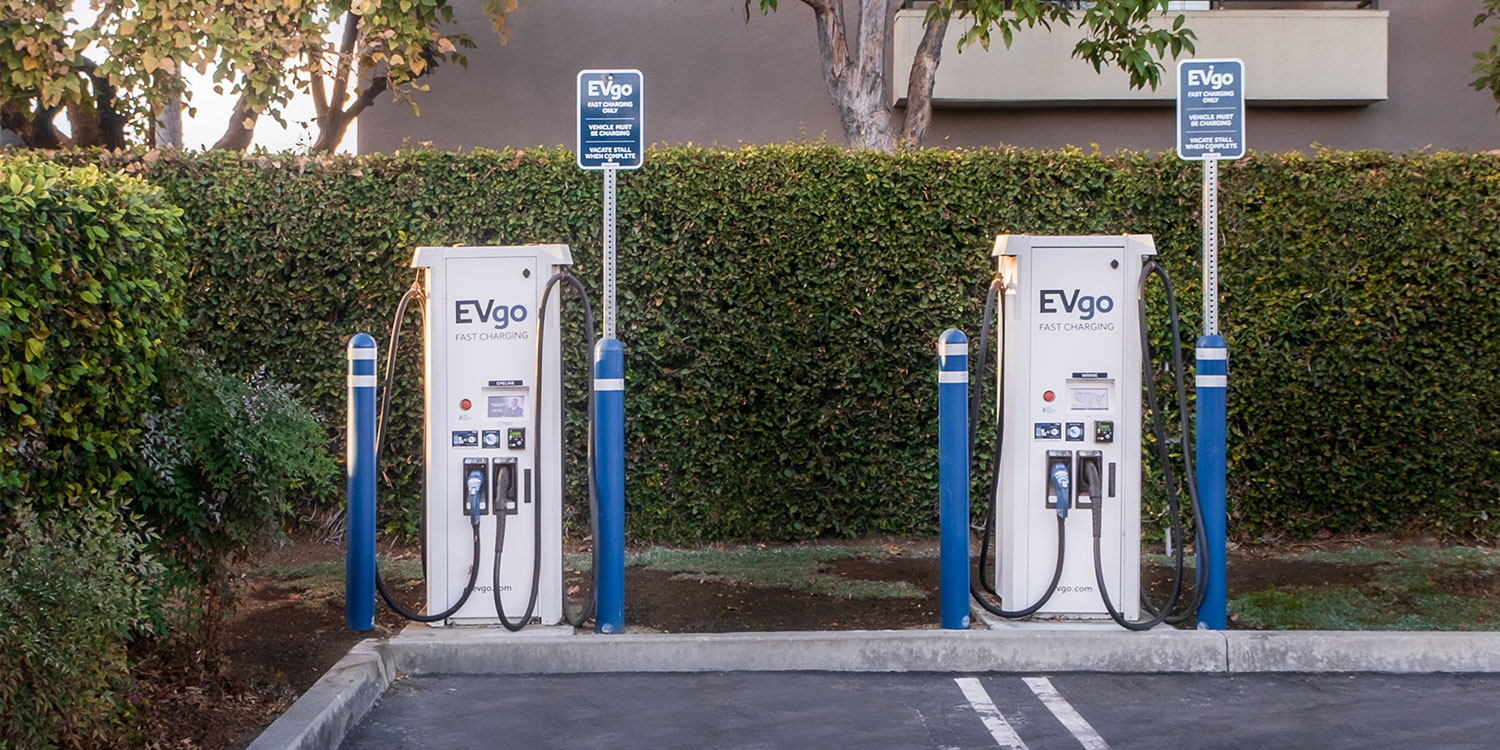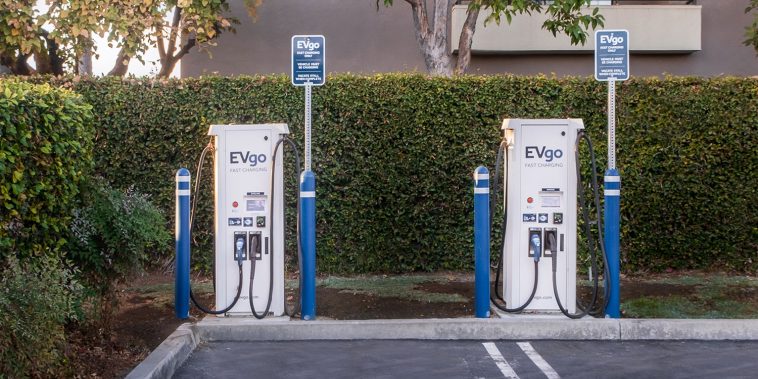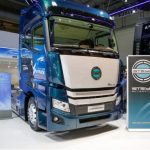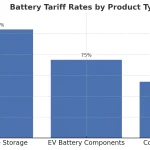
California’s Bold Opportunity to Reinvent Electric Vehicle Policy
California stands at a crossroads in America’s electric vehicle (EV) industry. With federal support having recently been pulled back under President Trump’s budgetary measures, the state finds itself with both a challenge and a powerful opportunity. As the nation’s EV market evolves and global competitors—especially China—push ahead, California must step into the breach to ensure its automotive future is not left in the rearview mirror.
In this editorial, we take a closer look at the current state of EV policy, examine California’s unique market power, and explore how state-level initiatives can surmount the tricky parts of federal withdrawal. By introducing innovative mechanisms like consumer credits, multifamily charging solutions, and accelerated permitting processes, California can set a new standard for the industry.
California’s EV Market Potential: Unlocking State-Level Leadership
California has long been synonymous with innovation, and when it comes to electric vehicles, the state is no exception. With over one-third of all U.S. EV sales found in California and nearly one in every four cars sold being electric, the state plays a super important role in driving the country’s shift to cleaner transportation.
Moreover, California is home to some of the country’s most advanced EV research and development hubs. Companies like Tesla, Lucid, Rivian, and even Ford have extensive operations here, employing tens of thousands of workers, including engineers who work through complicated pieces of design and innovation.
This exceptional market presence creates a unique leverage point against overseas competitors. The market scale alone provides California with the power to try innovative policies and to serve as a blueprint for other states and regions. While federal policy has taken a back seat in recent months, California’s leadership in EV adoption and its dynamic automotive ecosystem can quickly fill the void.
Bridging the Federal Void: How California Can Step Up
The withdrawal of federal EV support represents more than a loss of subsidies—it is a fundamental shift in the way automakers must approach the US market. The most notable impact is on automakers’ $100-billion race to close the technological and manufacturing gap with China, the clear global leader in EV creation today.
In response, California policymakers need to act decisively. The idea is not just to patch the gap but to build a robust system that supports automakers, consumers, and the entire energy infrastructure. Here are three important priorities that California should pursue:
- Consumer Incentives: Replace the soon-to-expire federal $7,500 credit with a streamlined state-level incentive.
- Multifamily Charging Infrastructure: Invest in solutions for renters and apartment dwellers to overcome the challenges of overnight charging.
- Accelerated Permitting: Fast-track the approval process for new fast-charging stations to catalyze further private investment.
Each of these priorities targets a key problem area in California’s current approach to EV adoption. By taking bold action, the state can use its market power to not only compete with global rivals but also to transform the American auto landscape.
California Electric Vehicle Consumer Credits: A New Paradigm for Boosting Adoption
One of the most nerve-racking twists following the change in federal policy is the imminent loss of consumer electricity vehicle credits. Until September 30, buyers still enjoy a $7,500 federal credit—an incentive that significantly lowers the overall cost of ownership. However, as this credit vanishes, California can step in by offering a state-level credit of approximately $3,500 for both new and used EVs.
This new strategy could have several benefits:
- Simplified Decision Making: Consumers often make their purchasing decisions based on monthly lease payments rather than total cost. A streamlined credit would help reduce these payments, making EVs more attractive.
- Increased Market Penetration: By eliminating income-based barriers, more first-time EV buyers could get into the market. Data show that once consumers take their first electric ride, they rarely go back.
- Economic Expansion: A broader consumer base for EVs means more work for American factories and parts suppliers. This increased activity can fuel job growth and economic stability in the region.
In short, by replacing federal incentives with state-level credits, California can turn a federal retreat into a win for local industry and consumers alike. Not only does this approach help maintain California’s leadership in EV adoption, but it also sends a message to global competitors about the state’s commitment to driving clean energy innovation.
Innovative Multifamily Charging Infrastructure: Powering the Evaporating Charging Gap
For many Californians, especially those living in high-density urban areas like Los Angeles or the San Francisco Bay Area, the lack of personal charging facilities is a major barrier to EV adoption. People in apartment buildings or condos often cannot get the same overnight charging benefits that homeowners enjoy. This situation creates a pinch point in the growing EV market, as renters and multifamily residents must rely on costly, public fast-charging stations.
A possible solution lies in state-funded programs aimed at subsidizing the installation of Level 2 charging stations in multifamily housing. Here’s how this initiative could unravel the tangled issues:
| Problem Area | Proposed Solution | Benefits |
|---|---|---|
| Limited Overnight Charging | Subsidize installation of Level 2 chargers for apartments/condos | Enables overnight charging; reduces reliance on more expensive fast chargers |
| High Fast-Charging Costs | Introduce affordable pricing models through shared charging hubs | Decreases monthly costs for EV drivers |
| Job Creation Deficits | Contract local, unionized labor for installation projects | Generates thousands of local jobs and strengthens economic stability |
This approach can lead to significant environmental and economic dividends:
- Reduced Charging Costs: Renters will benefit from lower monthly fees and improved accessibility to charging infrastructure.
- Job Growth: Local communities stand to benefit from state-funded projects that create stable, union jobs.
- Sustainable Air Quality: Increased EV adoption in urban areas will contribute to lower emissions and better public health outcomes.
By targeting the very specific challenges faced by multifamily residents, California can turn one of the state’s most significant obstacles into a stepping stone for broader EV adoption. This targeted approach is both an environmental boon and a wise economic strategy.
Fast-Tracking Permitting for Charging Infrastructure: Overcoming Bureaucratic Hurdles
Although California boasts the highest concentration of EVs in the nation, its charging infrastructure has been slowed by what many see as nerve-racking permitting delays and tangled issues with utility companies. The permitting process for constructing fast-charging stations is often riddled with complications, slowing down investments from private capital that is ready and waiting.
One potential fix is to emulate recent reforms in the residential construction sector, where streamlined processes helped accelerate home building while still keeping public safety in mind. California could apply a similar approach to the EV charging sector:
- Simplified Approval Processes: Introduce a fast-track permitting system for EV charging station construction. This system should aim to cut through overwhelming bureaucratic red tape while ensuring that the safety measures are not compromised.
- Collaboration with Utility Companies: Work closely with private and public power providers to create coordinated rollout plans that do not get stalled in red tape.
- Encouragement of Private Investment: By reducing the wait time for approvals, the state could invite billions of dollars in private investment to help build more fast-charging stations across California.
This streamlined permitting protocol would address many of the hidden complexities currently plaguing infrastructure deployment. It is a critical measure to ensure that California not only keeps up with but leads the development of a robust, future-proof charging network.
Competing on the Global Stage: Holding Off China’s Electric Vehicle Dominance
Globally, the race to lead in EV manufacturing points to one clear winner: China. With an industrial base that churns out three to five vehicles for every car built in the United States, Chinese manufacturers have taken a commanding lead in production and innovation. Their market share spans continents—from Australia to Europe—and even emerging markets in Latin America and the Middle East are feeling the impact.
However, it is important to remember that many of the foundational technologies behind today’s EVs were initially developed in the United States. American automakers and their allies in Europe, South Korea, and Japan are not without competitive edge. But without strong domestic support, American firms risk falling further behind.
California’s role can be pivotal in this global context. The state’s vast consumer base, combined with its history of progressive policies and state-level innovation, positions it as a crucial battleground in the race against Chinese dominance.
Key factors where California can tilt the balance include:
- Supporting Local Manufacturing: By introducing state incentives and investing in R&D, California can help local companies rebound and innovate.
- Creating a Pro-EV Ecosystem: A consistent policy framework—ranging from consumer credits to infrastructure investments—would boost consumer confidence and promote sustained market growth.
- International Competitive Edge: As automakers increasingly build EVs on American soil, California’s robust market presence can serve as a testing ground for new technologies that could eventually reshape global auto production.
It is a nerve-racking race, but it is not without hope. California’s innovative spirit, combined with state-led initiatives, has the potential to keep the nation competitive and help stave off the broader international trends that could leave the U.S. behind.
Addressing the Hidden Complexities and Economic Considerations
Critics of state-level EV incentives argue that taxpayer-funded credits may disproportionately benefit wealthier households—an issue full of problems that needs careful consideration. Nonetheless, the long-term benefits of a broader EV adoption strategy may well offset the initial cost disparities. Once consumers get into the habit of electric driving, studies show that they rarely revert to traditional, gasoline-powered vehicles.
In adding state-level incentives, California should consider these strategies to manage potential setbacks:
- Targeted “Conquest” Credits: Provide credits specifically for first-time buyers and leasers, rather than imposing restrictive income limits that could stunt overall growth.
- Monitoring and Adjustments: Implement a review process that tracks the program’s impact on consumer behavior and adjusts incentives as needed to ensure they remain effective and fair.
- Balancing Public Financing: Work closely with local governments and private investors to share the fiscal responsibility of the transition without overwhelming state budgets.
These measures will help smooth the rough bits of the policy transition and ensure that California’s initiatives are both affordable and widely beneficial. The complicated pieces of financing and distribution require flexible strategies and a willingness to adjust course as the market evolves.
Innovation Meets Regulation: Balancing Progress and Public Oversight
The push to fast-track EV infrastructure development comes with its own set of tricky parts. Critics caution that accelerated permitting might undermine important environmental safeguards and community input. However, proper checks and balances can reconcile the need for speed with necessary public oversight.
For instance, California’s recent reforms in the housing sector involved streamlining the environmental review process while still ensuring that vital public safety and environmental concerns were not overlooked. A similar method can be applied to EV infrastructure. This means:
- Clear, Timely Guidelines: Establish well-delineated criteria for fast-track permits that maintain critical standards without unnecessary delays.
- Structured Community Input: Create mechanisms that allow for stakeholder feedback without stalling the project timeline.
- Independent Oversight: Form an oversight panel to review fast-tracked projects, ensuring they meet both safety and efficiency benchmarks.
By finding your way through the bureaucratic twists and turns, California can stimulate a surge in infrastructure investment while preserving the community’s right to be heard and protected. This balanced approach is essential to ensuring the state’s long-term success in an evolving, competitive market.
Key Steps Ahead: A Roadmap for California’s EV Future
To sum up, California’s path forward in the electric vehicle sector involves several coordinated actions. As the federal government steps back, the state has a unique chance to establish a leading edge. Below is a high-level roadmap outlining key steps:
| Strategic Initiative | Action Points | Expected Outcomes |
|---|---|---|
| Consumer Incentives |
|
|
| Multifamily Charging Solutions |
|
|
| Fast-Track Permitting |
|
|
This roadmap lays out a clear strategy for how state policymakers and industry leaders can combine forces to address the short-term challenges and build a lasting foundation for the future of mobility in America.
Looking Beyond 2025: The Long-Term Vision
As the electric vehicle landscape continues to evolve, California’s response will serve not only as a reaction to immediate federal policy changes but as a template for long-term, sustainable growth. The state’s role in shaping the future of American mobility is super important—not just for the automotive industry, but for the broader economy and the environment as well.
Looking ahead, several factors need to be part of the long-term strategic vision:
- Innovation in R&D: Encourage ongoing investment in EV technology, focusing on everything from battery improvements to software integration. The state must continue to support local innovation hubs.
- Resilient Supply Chains: Develop robust local supply chains that can weather global market fluctuations and ensure a consistent flow of parts and materials for EV production.
- Workforce Development: Invest in training programs and educational initiatives that prepare the workforce for a future where electric vehicles dominate the roadways. This includes upskilling programs in both manufacturing and infrastructure installation.
- Environmental Oversight: Maintain strict environmental regulatory standards even as permitting processes are expedited. Sustainability must remain at the forefront of policy decisions.
These long-term priorities not only focus on the technical and economic elements but also on building a resilient, inclusive community of working Americans who are ready to lead the charge into a new era of automotive innovation.
California EV Incentive Programs: Charting a Course Through Complicated Pieces
The concept of using state funds to replace diminished federal incentives has raised some valid but understandable concerns. Critics argue that expanding credits without income restrictions might favor wealthier buyers. However, it’s essential to consider that many consumers, once introduced to electric vehicles, willingly continue using them even after the taste is acquired.
To evaluate the efficacy of such incentive programs, it is useful to break down the potential benefits and risks in simple terms:
- Benefits:
- Boosted adoption rates among hesitant or first-time buyers
- Reduction in reliance on fossil fuels, which positively impacts air quality
- Economic stimulus through increased manufacturing and service sector activities
- Risks:
- Potential for disproportionate usage by higher-income households
- Fiscal concerns regarding the long-term sustainability of state funding
- Challenges in balancing localized benefits with broader environmental goals
With clear, monitored rollout plans and regular adjustments based on outcomes, these challenges can be managed effectively. In many ways, what might initially seem like nerve-racking complications can be transformed into success stories—provided that there is continuous oversight and a willingness to adapt as necessary.
Building a Sustainable EV Ecosystem: A Collaborative Effort
While California’s state government can spearhead policy reforms, success in the EV market requires a concerted effort from all stakeholders. This means aligning the interests of automakers, local businesses, community groups, and regulatory agencies with the overarching goal of a clean, sustainable, and economically vibrant future.
Some collaborative initiatives could include:
- Public-Private Partnerships: Encourage joint investments in EV infrastructure projects that stimulate local economies and bolster green technology research.
- Innovative Financing Models: Develop creative funding strategies that share the financial risks and rewards between the state, private investors, and local communities.
- Community-Based Programs: Work with local municipalities to promote neighborhood-level charging solutions and EV-friendly urban planning that integrates seamlessly with public transit systems.
Each of these efforts not only creates a more holistic EV ecosystem but also serves to address the subtle details and little twists that can otherwise derail promising projects. It is about finding your way through the maze of approvals, partnerships, and technical details to achieve a lasting impact.
Conclusion: Steering California Towards a Renewable Transportation Future
The recent rollback of federal EV subsidies under President Trump’s policy marks a significant turning point for America’s electric vehicle industry. Yet, this challenge also provides California with a rare opportunity—to not only catch up with the global pace set by China and others, but to chart an entirely new course that serves as an example for the nation.
California can harness its market strength to implement super important state-level policies that propel the state into an era of sustainable, innovative automotive manufacturing. By introducing robust consumer credits, addressing the issues of multifamily charging in urban areas, and streamlining permitting processes, the state can overcome the overwhelming challenges currently faced by both consumers and industry alike.
In doing so, California will not only stimulate new job creation and reinforce its competitive edge worldwide, but it will also help pave the way for a cleaner, more sustainable environment. The competitive pressure from Chinese manufacturing is substantial, and the stakes are high—but the opportunity to redefine the future of transportation is even greater.
Ultimately, the success of California’s EV strategy will depend on the state’s ability to steer through the detailed twists and turns of policy implementation while keeping a keen eye on both consumer needs and broader economic realities. The resulting model has the potential to serve as a beacon for other states, inspiring nationwide efforts that embrace innovation without compromising on public safety and oversight.
As we move forward into an era where electric vehicles dominate the highways and byways of America, let us remember that the future of transportation is not dictated solely by federal mandates or global competition—it is also shaped by visionary state leaders who are ready to act decisively in the face of change.
California has the market, the talent, and the drive to be truly transformative in this new automotive age. With well-crafted policies that address the tricky parts, ensure streamlined processes, and capitalize on the state’s inherent strengths, the Golden State can lead a renewable transportation revolution that benefits the environment, modernizes the local economy, and ultimately proves that necessity truly is the mother of innovative, state-level policy.
Originally Post From https://www.latimes.com/opinion/story/2025-07-17/california-china-ev-electric-vehicle-donald-trump
Read more about this topic at
Sparkz Inc.: Manufacturing Cathode Material
How California Overcame a Major Barrier to Rail …


